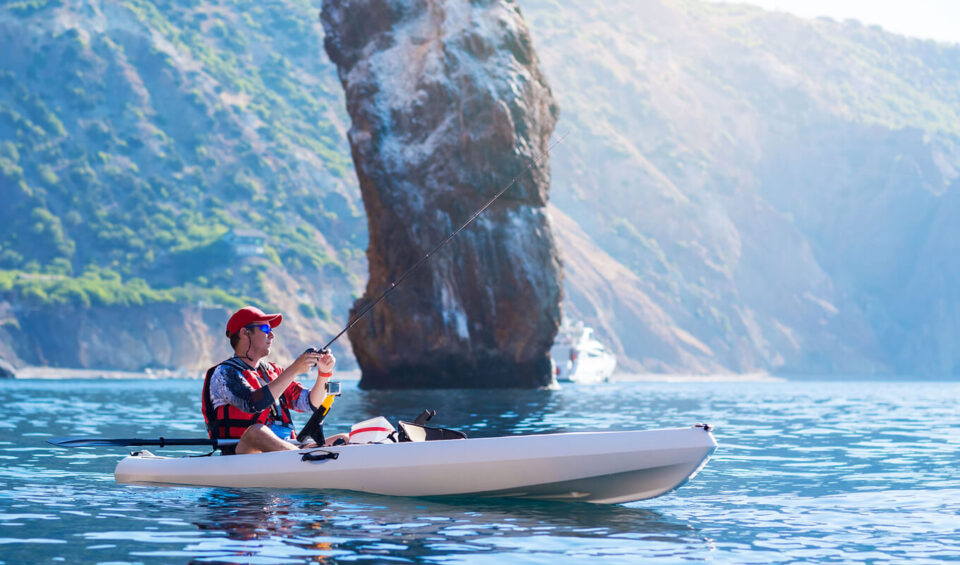Fishing has always been a beloved pastime, offering relaxation, patience, and the thrill of a great catch. In recent years, fishing kayaks have become increasingly popular, transforming the way anglers approach the water. Affordable, portable, and versatile, fishing kayaks provide access to spots that traditional boats can’t reach, while also offering a more immersive and eco-friendly fishing experience.
In this guide, we’ll explore everything you need to know about fishing kayaks—from their benefits and types to key features and buying tips.
Why Choose a Fishing Kayak?
- Affordability: Compared to motorboats, fishing kayaks are far more budget-friendly. Whether you’re a beginner angler or an experienced fisherman, kayaks allow you to enjoy fishing without a hefty investment.
- Accessibility: Kayaks give you access to shallow waters, narrow creeks, and hidden coves where larger boats can’t go. This opens up new fishing opportunities and increases your chances of finding the perfect catch.
- Portability: Most fishing kayaks are lightweight and easy to transport. You don’t need a trailer or large storage space—many models can be loaded onto a car roof rack or stored in a garage.
- Eco-Friendly: Kayaks are human-powered, meaning they don’t burn fuel or produce noise pollution. This makes them environmentally friendly and less likely to scare away fish.
- Peaceful Experience: Without the noise of motors, kayakers enjoy a serene fishing experience. The quiet approach also gives anglers an advantage, allowing them to get closer to fish.
Types of Fishing Kayaks
- Sit-on-Top Kayaks: These are the most popular fishing kayaks. They are stable, easy to get on and off, and self-draining. Sit-on-top kayaks are ideal for warm weather and beginners.
- Sit-Inside Kayaks: These offer more protection from wind and water, making them suitable for cooler conditions. However, they can be harder to enter and exit compared to sit-on-top models.
- Pedal-Driven Kayaks: Pedal kayaks allow you to use your feet instead of a paddle, keeping your hands free for fishing. They’re great for covering longer distances but tend to be more expensive.
- Inflatable Kayaks: Lightweight and easy to store, inflatable kayaks are perfect for anglers with limited space. Modern inflatables are durable and surprisingly stable, though they may not perform as well in rough waters.
- Tandem Kayaks: Designed for two people, tandem kayaks allow anglers to share the experience. They can also be paddled solo if needed.
Key Features to Look for in a Fishing Kayak
When choosing the right fishing kayak, consider these essential features:
- Stability: Fishing often involves standing up or making sudden movements. A wider kayak offers greater stability, making it easier to cast and reel in fish.
- Storage Options: Look for kayaks with dry storage compartments, bungee tie-downs, and tackle box holders. Having space for rods, bait, and gear is essential.
- Comfort: Since fishing trips can last for hours, a comfortable, adjustable seat with good back support is crucial. Some high-end kayaks include elevated seats for better visibility.
- Rod Holders: Built-in rod holders free up your hands and allow you to manage multiple lines. Some kayaks also come with mounts for accessories like fish finders.
- Weight Capacity: Ensure the kayak can handle your weight plus your fishing gear, cooler, and potential catch. Overloading can compromise stability and performance.
- Maneuverability: Shorter kayaks are easier to maneuver in tight spaces, while longer ones track better in open water. Choose based on where you plan to fish most often.
- Durability: Most fishing kayaks are made from high-density polyethylene, which is resistant to impacts and abrasions. Inflatable models should be made from rugged PVC or reinforced fabric.
Best Places to Use Fishing Kayaks
- Lakes and Ponds: Calm waters are perfect for beginners and leisurely fishing.
- Rivers and Streams: Kayaks allow you to access remote fishing holes and enjoy the challenge of currents.
- Coastal Waters: Many anglers use kayaks for saltwater fishing along shorelines and estuaries.
- Backwaters and Creeks: Hard-to-reach areas often hold the biggest surprises for kayak anglers.
Safety Tips for Kayak Fishing
- Wear a Life Jacket (PFD) at all times.
- Check Weather Conditions before heading out.
- Carry Safety Gear such as a whistle, flashlight, and first aid kit.
- Don’t Overload Your Kayak with gear beyond its weight limit.
- Practice Re-Entry Techniques in case you fall into the water.
- Stay Visible by using bright clothing or a kayak flag.
Tips for Choosing the Right Fishing Kayak
- Know Your Fishing Environment – Lakes, rivers, or coastal waters may require different designs.
- Consider Your Budget – Sit-on-top kayaks are budget-friendly, while pedal-driven models cost more but add convenience.
- Test Before Buying – Many shops offer demo days where you can try different models.
- Think About Transport and Storage – Choose a kayak size and type that fits your lifestyle.
- Prioritize Comfort – Long fishing trips require a supportive seat and plenty of legroom.
Conclusion
Fishing kayaks offer anglers a versatile, affordable, and eco-friendly way to enjoy their favorite hobby. Whether you prefer calm lake waters or challenging coastal fishing, there’s a kayak designed to suit your needs. With options ranging from sit-on-top models to pedal-powered designs, modern fishing kayaks combine stability, comfort, and functionality.
By investing in the right kayak and outfitting it with the right gear, you can unlock new fishing opportunities, explore hidden waterways, and enjoy the peaceful connection to nature that only kayak fishing provides.

